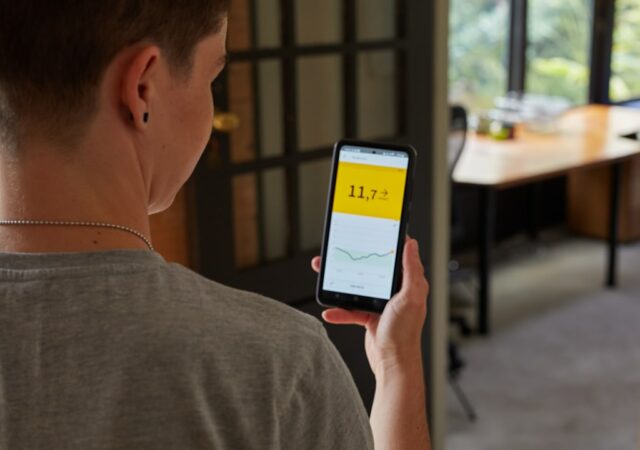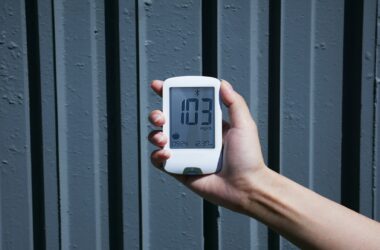Regular monitoring of blood glucose levels is crucial for individuals with diabetes. It allows them to track their progress, make necessary adjustments to their treatment plan, and prevent complications associated with high or low blood sugar levels. By monitoring their blood glucose levels regularly, individuals with diabetes can gain a better understanding of how their body responds to different foods, physical activity, stress, and medication.
This information is essential for making informed decisions about their diet, exercise routine, and medication dosage. Additionally, regular monitoring can help individuals with diabetes identify patterns and trends in their blood glucose levels, which can be used to make proactive changes to their lifestyle and treatment plan. Furthermore, regular monitoring of blood glucose levels can help individuals with diabetes prevent long-term complications such as nerve damage, kidney disease, and cardiovascular problems.
By keeping their blood sugar levels within the target range, individuals with diabetes can reduce the risk of developing these complications and improve their overall quality of life. Regular monitoring also provides healthcare providers with valuable information that can be used to adjust treatment plans and provide personalized care to individuals with diabetes. Overall, regular monitoring of blood glucose levels is essential for managing diabetes effectively and preventing complications associated with the condition.
Regular monitoring of blood glucose levels is essential for individuals with diabetes to manage their condition effectively. It allows them to make informed decisions about their diet, exercise routine, and medication dosage. By tracking their blood glucose levels regularly, individuals with diabetes can identify patterns and trends in their blood sugar levels and make proactive changes to their lifestyle and treatment plan.
This can help them prevent complications associated with high or low blood sugar levels and improve their overall quality of life. Additionally, regular monitoring provides healthcare providers with valuable information that can be used to adjust treatment plans and provide personalized care to individuals with diabetes. By working together with their healthcare team and staying proactive about monitoring their blood glucose levels, individuals with diabetes can take control of their condition and reduce the risk of developing long-term complications.
Key Takeaways
- Regular monitoring is crucial for managing diabetes and preventing complications
- Blood glucose monitoring techniques include fingerstick testing and continuous glucose monitoring
- Continuous Glucose Monitoring (CGM) provides real-time data on blood glucose levels
- A1C testing measures average blood glucose levels over the past 2-3 months
- Monitoring ketones is important for people with diabetes, especially those with type 1 diabetes
- Monitoring blood pressure and cholesterol levels is essential for overall cardiovascular health in diabetes
- Keeping a diabetes monitoring log helps track progress and identify patterns in blood glucose levels
Blood Glucose Monitoring Techniques
Self-Monitoring with a Blood Glucose Meter
Self-monitoring using a blood glucose meter is the most common method for individuals with diabetes to track their blood sugar levels at home. This involves pricking the finger to obtain a small drop of blood, which is then placed on a test strip and inserted into a blood glucose meter. The meter measures the amount of glucose in the blood and provides a reading within seconds. This technique allows individuals with diabetes to monitor their blood glucose levels throughout the day and make necessary adjustments to their treatment plan.
Continuous Glucose Monitoring (CGM) Systems
Continuous glucose monitoring (CGM) systems are another technique for monitoring blood glucose levels. These systems use a small sensor inserted under the skin to measure glucose levels in the interstitial fluid. The sensor is connected to a transmitter that sends the glucose readings to a receiver or smartphone app. CGM systems provide real-time data on blood glucose levels, trends, and patterns, allowing individuals with diabetes to make informed decisions about their diet, exercise routine, and medication dosage. Additionally, CGM systems can alert users to high or low blood sugar levels, providing an added layer of safety and peace of mind.
A1C Testing
A1C testing is a technique for monitoring blood glucose levels over a longer period of time. This test measures the average blood glucose level over the past two to three months by assessing the amount of glucose that has attached to hemoglobin in the red blood cells. A1C testing provides healthcare providers and individuals with diabetes with valuable information about their overall blood sugar control and helps guide treatment decisions.
By using these various monitoring techniques, individuals with diabetes can gain a better understanding of their blood glucose levels and make informed decisions about their treatment plan.
Continuous Glucose Monitoring (CGM)

Continuous Glucose Monitoring (CGM) is an advanced technology that allows individuals with diabetes to track their blood glucose levels in real-time throughout the day and night. CGM systems use a small sensor inserted under the skin to measure glucose levels in the interstitial fluid. The sensor is connected to a transmitter that sends the glucose readings to a receiver or smartphone app.
CGM systems provide real-time data on blood glucose levels, trends, and patterns, allowing individuals with diabetes to make informed decisions about their diet, exercise routine, and medication dosage. One of the key benefits of CGM is its ability to alert users to high or low blood sugar levels. CGM systems can provide customizable alerts that notify users when their blood sugar levels are outside of the target range.
This feature can help individuals with diabetes take proactive steps to prevent hypoglycemia or hyperglycemia and maintain better control over their blood sugar levels. Additionally, CGM systems can provide valuable insights into how different factors such as food, exercise, stress, and medication impact blood glucose levels. This information can be used to make proactive changes to an individual’s lifestyle and treatment plan.
Furthermore, CGM systems can help individuals with diabetes identify patterns and trends in their blood glucose levels that may not be apparent through traditional self-monitoring using a blood glucose meter. By gaining a better understanding of how their body responds to different factors throughout the day and night, individuals with diabetes can make informed decisions about their treatment plan and improve their overall blood sugar control. Overall, continuous glucose monitoring (CGM) is a valuable tool for individuals with diabetes to gain real-time insights into their blood glucose levels and make proactive decisions about their treatment plan.
Continuous Glucose Monitoring (CGM) is an advanced technology that allows individuals with diabetes to track their blood glucose levels in real-time throughout the day and night. CGM systems use a small sensor inserted under the skin to measure glucose levels in the interstitial fluid. The sensor is connected to a transmitter that sends the glucose readings to a receiver or smartphone app.
CGM systems provide real-time data on blood glucose levels, trends, and patterns, allowing individuals with diabetes to make informed decisions about their diet, exercise routine, and medication dosage. One of the key benefits of CGM is its ability to alert users to high or low blood sugar levels. CGM systems can provide customizable alerts that notify users when their blood sugar levels are outside of the target range.
This feature can help individuals with diabetes take proactive steps to prevent hypoglycemia or hyperglycemia and maintain better control over their blood sugar levels. Additionally, CGM systems can provide valuable insights into how different factors such as food, exercise, stress, and medication impact blood glucose levels. This information can be used to make proactive changes to an individual’s lifestyle and treatment plan.
Furthermore, CGM systems can help individuals with diabetes identify patterns and trends in their blood glucose levels that may not be apparent through traditional self-monitoring using a blood glucose meter. By gaining a better understanding of how their body responds to different factors throughout the day and night, individuals with diabetes can make informed decisions about their treatment plan and improve their overall blood sugar control.
A1C Testing and Monitoring
A1C testing is an important tool for monitoring blood glucose levels over a longer period of time. This test measures the average blood glucose level over the past two to three months by assessing the amount of glucose that has attached to hemoglobin in the red blood cells. A1C testing provides healthcare providers and individuals with diabetes with valuable information about their overall blood sugar control and helps guide treatment decisions.
The results of A1C testing are typically expressed as a percentage that reflects the average blood glucose level over the past two to three months. For most individuals with diabetes, the target A1C level is below 7%. However, healthcare providers may recommend different target A1C levels based on an individual’s age, overall health, and other factors.
By regularly monitoring A1C levels, individuals with diabetes can gain insights into how well they are managing their condition over time. A1C testing is an important tool for monitoring blood glucose levels over a longer period of time. This test measures the average blood glucose level over the past two to three months by assessing the amount of glucose that has attached to hemoglobin in the red blood cells.
A1C testing provides healthcare providers and individuals with diabetes with valuable information about their overall blood sugar control and helps guide treatment decisions. The results of A1C testing are typically expressed as a percentage that reflects the average blood glucose level over the past two to three months. For most individuals with diabetes, the target A1C level is below 7%.
However, healthcare providers may recommend different target A1C levels based on an individual’s age, overall health, and other factors. By regularly monitoring A1C levels, individuals with diabetes can gain insights into how well they are managing their condition over time.
Monitoring Ketones in Diabetes
Monitoring ketones is important for individuals with diabetes who use insulin or have difficulty controlling their blood sugar levels. Ketones are produced when the body breaks down fat for energy instead of using glucose from carbohydrates. High levels of ketones in the body can lead to a serious condition called diabetic ketoacidosis (DKA), which can be life-threatening if not treated promptly.
Individuals with diabetes should monitor ketones when they are sick or have high blood sugar levels above 240 mg/dL. Ketone testing can be done using urine test strips or specialized meters that measure ketone levels in the blood. By regularly monitoring ketones during times of illness or high blood sugar levels, individuals with diabetes can take proactive steps to prevent diabetic ketoacidosis and seek medical attention if necessary.
Monitoring ketones is important for individuals with diabetes who use insulin or have difficulty controlling their blood sugar levels. Ketones are produced when the body breaks down fat for energy instead of using glucose from carbohydrates. High levels of ketones in the body can lead to a serious condition called diabetic ketoacidosis (DKA), which can be life-threatening if not treated promptly.
Individuals with diabetes should monitor ketones when they are sick or have high blood sugar levels above 240 mg/dL. Ketone testing can be done using urine test strips or specialized meters that measure ketone levels in the blood. By regularly monitoring ketones during times of illness or high blood sugar levels, individuals with diabetes can take proactive steps to prevent diabetic ketoacidosis and seek medical attention if necessary.
Monitoring Blood Pressure and Cholesterol Levels

Monitoring Blood Pressure
Monitoring blood pressure involves measuring both systolic (top number) and diastolic (bottom number) pressure using a sphygmomanometer or automatic monitor. The target blood pressure for most individuals with diabetes is below 130/80 mmHg. By regularly monitoring their blood pressure at home or during healthcare visits, individuals with diabetes can take proactive steps to manage hypertension through lifestyle changes or medication if necessary.
Monitoring Cholesterol Levels
Monitoring cholesterol levels involves measuring total cholesterol, LDL (bad) cholesterol, HDL (good) cholesterol, and triglycerides through a lipid panel test. The target cholesterol levels for most individuals with diabetes include LDL cholesterol below 100 mg/dL, HDL cholesterol above 40 mg/dL for men and above 50 mg/dL for women, total cholesterol below 200 mg/dL, and triglycerides below 150 mg/dL. By regularly monitoring their cholesterol levels through lipid panel tests, individuals with diabetes can take proactive steps to manage dyslipidemia through lifestyle changes or medication if necessary.
Taking Proactive Steps
By regularly monitoring their blood pressure and cholesterol levels, individuals with diabetes can take proactive steps to manage hypertension and dyslipidemia, reducing the risk of heart disease, stroke, and other cardiovascular problems. This can be achieved through lifestyle changes, such as a healthy diet and regular exercise, or medication if necessary.
Importance of Keeping a Diabetes Monitoring Log
Keeping a diabetes monitoring log is essential for tracking all aspects of diabetes management including blood glucose levels, medication usage, physical activity, diet choices, ketone testing results, A1C levels, blood pressure readings, cholesterol levels, and any symptoms or concerns related to diabetes. By maintaining a comprehensive log of all these factors on a regular basis, individuals with diabetes can gain valuable insights into how different aspects of their lifestyle impact their condition over time. This information can be





